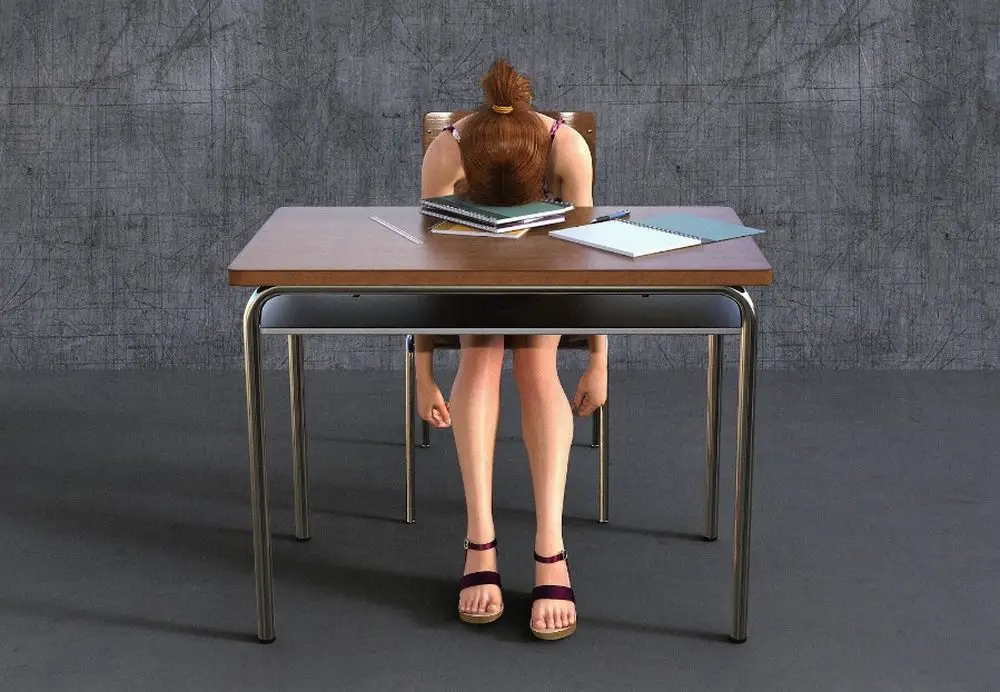The plateau effect is familiar to athletes and thinners, as it occurs when, after a period of progress, physical performance or weight stagnates at a certain point and does not want to move forward. But this same effect is also present in learning. Let’s understand what it manifests itself in and how to overcome it.
Almost everyone faces the plateau effect in work, creativity, and everyday life, and it is expressed in the absence of inspiration and loss of motivation. It is important not to confuse the plateau effect with the usual moping, fatigue, or bad moods.
It is characterized by a consistent decline or lack of progress, while the level of resources and effort expended has not changed.
Although more often the plateau effect appears in what concerns the body, physical performance, it also exists in areas related to mental activity. With students, the plateau effect occurs when tried-and-true study strategies no longer promote a meaningful understanding of the material.
Contents
The Plateau Effect – What is it?
Characteristic signs of the plateau effect are disappointment, boredom, a feeling of senseless waste of time and effort, loss of self-confidence, and a feeling of trampling on place – a halt in development. In contrast to temporary difficulties, when you reach a plateau, these symptoms become lingering and sometimes intensify.
If the problem is not detected in time, the neglected situation can lead to the child succumbing to this negative condition and simply abandoning his studies. Identifying the onset of the plateau effect is difficult. It is a long gradual process, and often children themselves do not understand what is going wrong or what the problem is. One of the signs is a decrease or lack of motivation to learn.
Sometimes the student struggles, but, not getting results from the efforts made, gives up. It is possible to return the desire to learn only through changes: a change of place of study, curriculum, methods or approach, and rethinking of the child’s own psychological attitudes.
The Causes of the Plateau Effect
Besides problems with motivation, a plateau effect can be caused by a poor curriculum, addiction, child perfectionism, dependence on results, and distractions can all contribute to a plateau effect, in addition to motivation issues.
If the curriculum becomes repetitive and routine, the student’s interest and concentration decrease. If the work and rest mode is not well built, and a student is in a hurry to learn everything, he can simply overload the brain and reduce performance. Not always a large amount of effort leads to great results.
Pareto’s law, according to which 20% of efforts provide 80% of the results, works for school tasks. Sometimes the problem lies in some specific part of the educational process. For example, a child has trouble memorizing formulas in physics, which leads to a general decline in performance in the subject.
Internal psychological attitudes play a big role: children tend to compare themselves to their peers, underestimate their results, and lose faith in themselves. Perfectionists want to do perfect, but end up not doing it at all, because their desire for perfection does not even allow them to start.
Even if they do start a project, pursuing perfection can lead to immense amounts of extra work with a lackluster or nonexistent outcome. If the brain receives too much information from different sources at the same time, attention becomes unfocused. This happens when a student wants to have time in class, on TicToc, and in chats with friends.
How to Overcome the Plateau Effect?
When the plateau effect occurs, changes are necessary, and often drastic ones: a break in learning, a change of school, or a rethinking of one’s attitude toward the process and oneself. Each of the problems most typical of the plateau effect has a solution.
If you’re feeling stuck and uncertain of how to progress, the experienced authors of an essay writing service have crafted a few pieces of advice to help kickstart your momentum again:
- New exercises and techniques or the customization of existing ones.
- That is, an increase in variety – will help with habituation. Choosing the right moment to exert effort is just as important as the effort itself.
- The brain works with information differently depending on time – hence the success of interval repetition techniques, for example.
- Sometimes you just have to pause and let the information move from short-term to long-term memory.
- If it’s not clear what exactly is slowing down progress, you need to break down the whole learning process into its component parts to identify the problematic one.
- If it is not possible to do this at once, then by changing the individual components of the process, it is possible to understand what exactly was causing the stupor.
- Link learning with practice.
- Put the acquired knowledge into practice or use it in your current work. This way you can see what knowledge has been stored, what you need to repeat, and what you still need to work on.
- As a result, you will understand how to make a training plan further, and where to move.
- Self-perception can also be the cause of the plateau effect.
- Uncertainty in their abilities and low self-esteem block development, although it often arises from a distorted, wrong perception of themselves and classmates who seem to be smarter and better.
- Here you need the help of a teacher and parents, friends. They can give a more objective view from the outside, and breathe confidence.
- The opposite situation – the tendency to perfectionism, can be overcome in two stages.
- First, convey to the child the idea that it is not necessary, and sometimes impossible, to do it perfectly.
- Then develop self-discipline, the ability to structure the task and break it down into separate steps, and set deadlines for each step.
- The problem of distractions can be solved by eliminating them or by using psychological practices such as the “Pomodoro Technique“.
- Divide the work into segments and allow yourself a full-fledged distraction, but only during these periods, so that you can then work without being distracted by extraneous things.
Summing Up
The plateau effect is a widespread problem, which can be difficult to detect at an early stage and just as easy to eliminate. However, prevention and diagnosis on the part of both teachers and parents will help to detect the symptoms of this disorder in time and take action.




